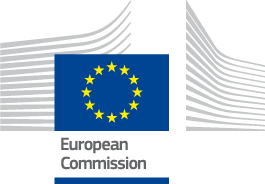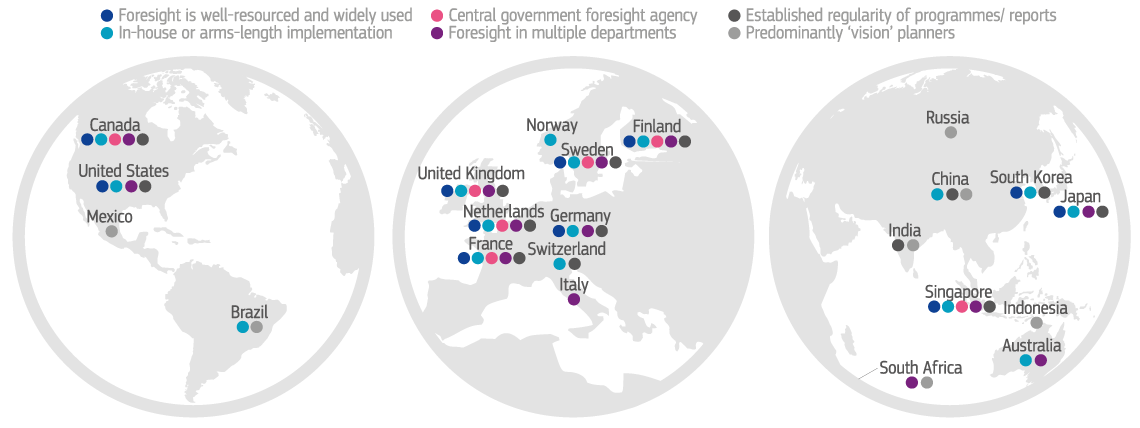



Governments, international organisations, think-tanks, companies and associations are increasingly engaging in strategic dialogues to identify transformative trends and stimulate their thinking about possible global trajectories and discontinuities.
We invited Joan Moh, Head, Centre for Strategic Futures, Singapore and Enrico Giovannini, Visiting Fellow, European Political Strategy Centre and Professor of Economic Statistics, Rome University “Tor Vergata” to share their experience on why foresight matters to support policymakers in long term planning.
The conundrum of the planner and the policy-maker is how to make robust plans and policies that stay valid over the long term, even as the operating environment and technologies change. This challenge is exacerbated by black swans and strategic surprises - game changers that are low-probability but high-impact events, such as the Asian financial crisis of 1997, the al-Qaeda attacks of 11 September 2001, the SARS crisis of 2003, and the global economic and financial crisis of 2008-09. These shocks set in motion new dynamics, creating new challenges and fresh uncertainties. The first step to addressing these challenges is to build into plans and policies an expectation of change through foresight capabilities.
The Singapore experience illustrates the integration of foresight into governance. Finding ways to better anticipate changes in technology and the operating environment is particularly imperative for the Singapore Ministry of Defence (MINDEF), because many of its large capital projects have to be sustained over decades. In the late 1980s, MINDEF adopted scenario planning techniques first developed by Royal Dutch Shell. Then in 1991, after MINDEF's positive experience with scenario planning, the Scenario Planning Office, now called Strategic Planning and Futures (SP&F), was set up in the Prime Minister's Office. This unit applied scenario planning to issues affecting the entire government, not just the security agencies.
Today, scenario planning is a key part of the Singapore government's strategic planning process, and is incorporated into the annual budget cycle. National-level scenario planning exercises are conducted every few years. The results are used by agencies for their own foresight purposes. Scenario planning surfaces otherwise hidden assumptions and mental models; well-crafted scenarios move policy-makers out of their comfort zones, encouraging them to think the unthinkable and explore fresh strategies.
In 2004, the Singapore government developed a suite of big-data software tools called the RAHS (Risk Assessment and Horizon Scanning) system, with the data analytics to do horizon scanning, scenarios-to-strategies and sentiment analysis. RAHS is a shared platform that helps analysts from different agencies to detect and investigate emerging strategic threats and opportunities, and to collaborate on research, modelling and perspective sharing.
In 2009, the Singapore government set up the Centre for Strategic Futures (CSF), a think tank that promotes a whole-of-government approach to strategic planning. It identifies and develops foresight concepts and tools in addition to scenario planning, analyses emerging issues, and catalyses foresight functions in the Singapore government. Since its establishment, several agencies have set up their own futures units.
In 2015, SP&F and CSF moved into the new Strategy Group (SG) in the Prime Minister’s Office, the centre-of-government unit in Singapore which takes a whole-of-government approach in strategising for Singapore’s mid- to long-term future. This directly integrates foresight work with strategic policy making in the government.
Good plans and policies acknowledge the uncertainties and complexities of the operating environment. Because the future cannot be predicted with confidence, governments need foresight tools to factor such flux into governance strategies.
While forecasting is a widely accepted technique, especially in economics and finance, foresight is much less used, especially in policy making. Policy makers and politicians do not like uncertainty: they prefer to receive a prediction about the future and use it to make their decisions, forgetting about the margins of error of any forecasts.
Foresight is different. It obliges us to think about the type of future we want to build and how to get there. It requires time to be understood and it cannot be reduced to a few numbers (like the GDP growth or the ratio between public deficit and GDP). Alternative scenarios can differ for several reasons, and the user needs to deeply understand the nexus between various economic, social and environmental dimensions. In other words, it requires time, as well as clarity in our thinking, two elements that may be difficult to find nowadays in the policy arena.
On the other hand, it is clear that we are currently facing problems that could have been identified in the past, and often had been identified in the past, using foresight. Today migration is considered an emergency, but massive flows of people from Africa to Europe were clearly predicted by foresights developed already forty years ago. Low economic growth in developed countries, especially in Europe, was considered the most likely scenario in foresight exercises carried out ten years ago. Similarly, recent foresight results about the future of the world show a clear unsustainability of the current development model, not only because of environmental reasons.
Given the high level reached by foresight techniques, ignoring their results is a luxury that we cannot afford. Especially in the European Union, where decision making processes take longer than at national level. The “Five Presidents Report” has indicated a possible future for the Union: politicians and policy makers should focus on the strengthening of our common institutions, but their attention is continuously hijacked by daily emergencies. The result is that very few of them think in a long-term perspective, as some of their predecessors did.
The European Commission has invested a remarkable amount of resources to develop foresight exercises, with very interesting results that should drive policies now, to make the future better than what the “business as usual” could do. Wasting these opportunities is no longer acceptable. If European Institutions want to be “bold” on big issues, I do not see anything more urgent than, using the results of foresight, being “bold” on designing our common future.

Source: Yearbook of European Security 2013.